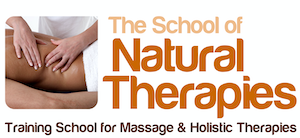
Description
Cupping has its roots in ancient China. The earliest written document recorded the use of cupping therapy came from the famous doctor, Ge Hong (281-341 AD), who popularized the saying “acupuncture and cupping, more than half of the ills cured.”
Cupping is well known and used in Traditional Chinese Medicine (TCM) in the modern world, alongside acupuncture, moxibustion and herbal interventions and uses.
In the sports and complementary field, cupping can be used for a number of different approaches, ranging from muscle pain, fascia and structural problems to general wellbeing, treatment of pain and improved range of motion.
For the trained practitioner, cupping is time and energy efficient and provides excellent results.
How does Cupping work?
A partial vacuum is created in cups placed on the skin by means of heat or suction. This lifts the underlying soft tissue stretching the fascia thus creating a stretch effect.
The cup is left in place on the skin for a few minutes whilst blood stasis is formed, and localised healing takes place.
Further uses of cupping
In the philosophy of TCM, cupping therapy has been further developed as a means to open “the meridians” of the body.
Meridians are believed to be conduits in the body through which energy flows to every part of the body and every organ and tissue. There are five meridians on the back that when opened allowed invigorating energy (in TCM ‘Qi’) to treat the whole body holistically.
Cupping has also been found to affect the body up to 4 inches into tissues causing tissues to release toxins, activate the lymphatic system, help activate and clear the veins, arteries and capillaries, activate the skin, clear stretch marks and improve varicose veins. This makes cupping a good means of delivering deep tissue manipulation and this useful and safe technique can be easily learned and incorporated into your practice.
Course Structure
- What is Cupping?
- History of Cupping
- Cupping marks
- Equipment required, Health & Safety
- Contraindications
- Demonstration of various techniques – suction/sliding/flash cupping.
- Plenty of time for practice of techniques
- Continuous assessment throughout the day
Treatment list for practical techniques
- The Spine and spinal misalignments
- Muscle and soft tissue work, which includes: –
- Stiff neck pain and dysfunction
- Frozen shoulder
- Upper back pain
- Mid/lower back pain
- Lateral thoracic pain
- Hip pain & Sciatica
- Respiratory disorders
- Effects on sympathetic and parasympathetic nervous system
- Cellulitis treatment.
Who is this course open to?
This course is suitable for qualified massage therapists at level 3 or above – the qualification must be UK recognised as part of the VRQ/NVQ framework.
Contact
E: info@schoolofnaturaltherapies.co.uk
T: 0203 544 6544